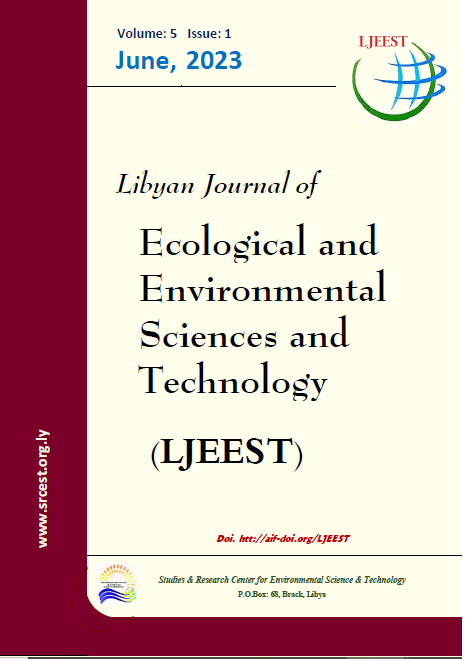Assessment of Drinking Water Quality Transported by Pipes from A Microbial and Chemical
DOI:
https://doi.org/10.63359/3dfdqd25Keywords:
drinking water quality assessment, physio-chemical and microbial parametersAbstract
In a study to conduct an assessment of the drinking water quality in 4 different regions (Shaabiat Al-Jaish, Buildings Al-Hurriya, Al-Mukhtar, and Al-Khaleej) in Tobruk city, Libya, through collection 5 samples from each region, physical, chemical, and microbial parameters analysis were performed for all samples and compared to the source water, which is a seawater desalination plant (Tobruk desalination plant), as well as comparing with quality specifications and standards according to the World Health Organization. Although there is a difference in the results of the analysis between the four regions, the results obtained from the physio-chemical analysis of water samples were within Libyan specifications and standards, and WHO guidelines. For example, Electrical conductivity varied between 160 µS cm-1 and 368 µS cm-1 but it did not exceed the permissible limits according to the World Health Organization, which are 400 µS cm-1. Also, the results of the analysis of total dissolved salts in the four regions, concentrations were found to be 107 ppm, 120 ppm, 246 ppm, and 223 ppm. As well as pH values in all the collected drinking water samples did not exceed the permissible limits according to WHO, which ranged from (7.1 to 7.4) in the four study regions. Na concentrations obtained from the water samples in the four analyzed regions ranged (15.28 mgl-1,17.17 mgl-1, 38.48 mgl-1, and 31.89 mgl-1. As for the bacterial analysis, the results showed that there is microbial contamination in the first and second regions, which may be due to contamination due to the overlapping of sewage water.














